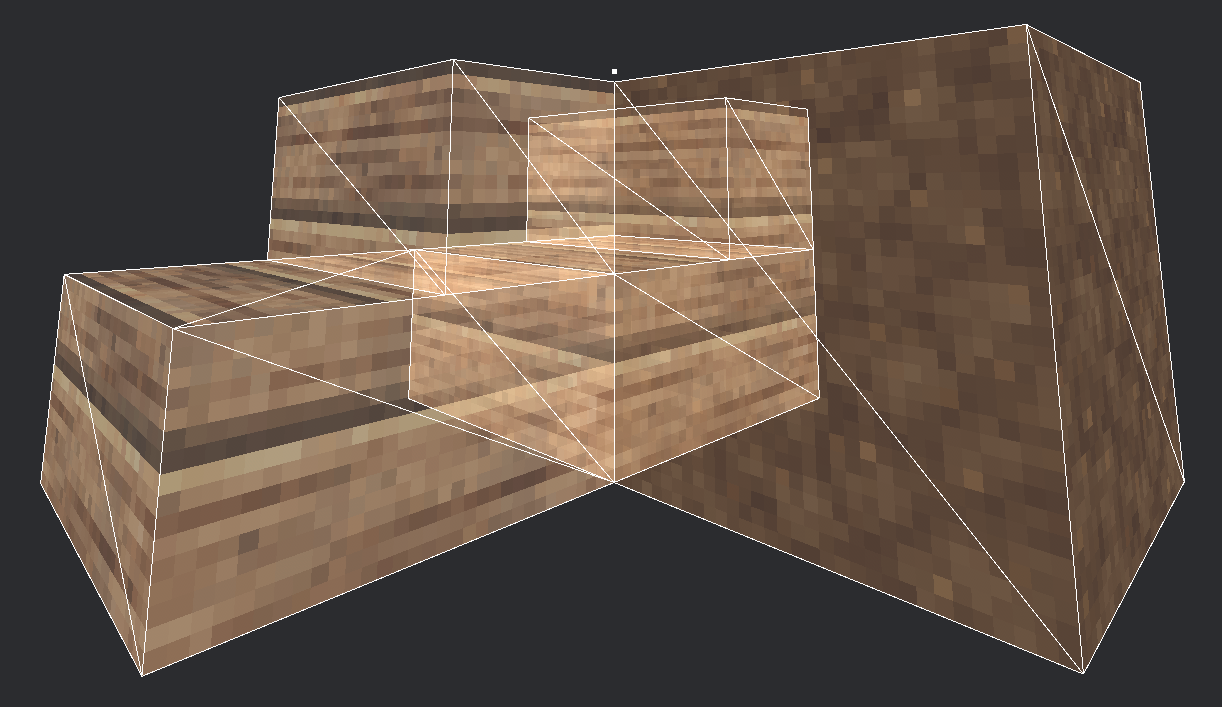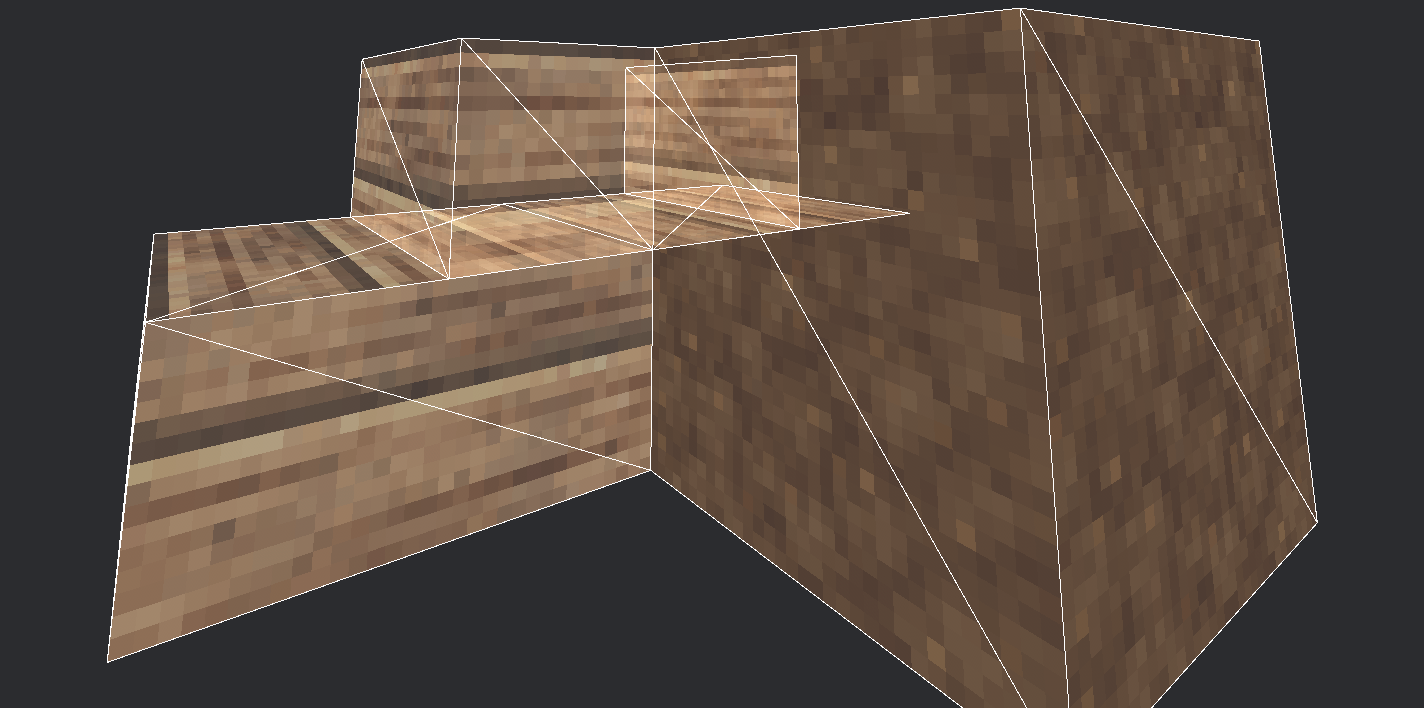Face Culling for Cubes and Stairs (Vintage Story-like Method)
Clear explanation of face culling for cubes and stairs in voxel games, inspired by Vintage Story. Includes visuals, logic, and pseudocode.
This guide explains clearly how face culling works for cubes and stairs in voxel engines. The explanation is inspired by Vintage Story’s method, clarified with real logic examples.
The aim is simplicity: to make sure you understand the logic behind culling clearly and can implement it yourself.
What is Face Culling?
Face culling is skipping the rendering of block faces that are not visible, improving performance significantly.
Why is it important? Without culling, your engine draws thousands of hidden faces - wasting GPU resources and slowing down the game.
1. Basic Cube Face Culling
For cubes, culling is simple:
- Each face of a cube has a neighbor block.
- If both the current face and the opposite face of the neighbor are solid, then the current face is invisible and can be skipped.
Here’s the logic clearly expressed in pseudocode (Rust-inspired):
1
2
3
fn should_cull_face(block, face_direction, neighbor_block) -> bool {
block.is_side_solid(face_direction) && neighbor_block.is_side_solid(face_direction.opposite())
}
is_side_solid(face)means:- Cubes have all faces solid by default.
- For special blocks (stairs), only specific faces are solid.
- Opposite faces:
- North ↔ South, East ↔ West, Up ↔ Down
- In code, this can be implemented using simple arrays or enums (bit masks for directions).
2. Stairs: Why Cubic Logic Breaks
For stairs, simple logic is not enough. A stair’s solid faces are usually only bottom and back, while the front, sides, and top are not solid by default.
Example:
- If you place stairs next to a cube (e.g. side-by-side), the cube’s face should not disappear because the stair side isn’t solid.
- But, if you place two stairs side-by-side in the same orientation, the internal faces should disappear - even though these faces are not marked as solid.
This is a special case handled differently. It requires recognizing stair-stair adjacency and overriding the default solid-face logic.
3. Special Culling Logic for Stairs
Stairs need custom logic:
- Stairs never cull their top face (always visible).
- The front and sides are not solid by default, but:
- If two stairs of the same type touch each other, faces between them are culled if orientations match, despite faces being non-solid by default.
- Bottom and back faces are solid and always cull as usual.
Clearly put, in pseudocode:
1
2
3
4
5
6
7
8
9
10
11
12
13
14
15
16
17
18
19
fn should_cull_face_stairs(block, face_direction, neighbor_block) -> bool {
let same_block_type = block.type == neighbor_block.type;
let neighbor_face_solid = neighbor_block.is_side_solid(face_direction.opposite());
if face_direction == Up {
return false; // stairs top face is never culled
}
// Check special stair alignment logic
if same_block_type {
let aligned = check_faces_aligned(block, neighbor_block, face_direction);
if aligned {
return true; // aligned stairs: hide face
}
}
// Default solid check otherwise
block.is_side_solid(face_direction) && neighbor_face_solid
}
Here, check_faces_aligned() means orientation and geometry match exactly.
1
2
3
fn check_faces_aligned(a: Block, b: Block, face: BlockFace) -> bool {
a.shape == b.shape && a.rotation == b.rotation
}
4. Implementation Details (from my code)
Border Faces Optimization
You only check culling for border faces - faces at the edge of the block:
1
2
3
4
5
// This avoids checking inner faces of multi-element shapes (like stairs)
// Only the faces that lie exactly on block borders are relevant for culling
fn is_border_face(face, vertices, axis, border) -> bool {
vertices.all(|v| abs(v[axis] - border) < epsilon)
}
Neighbor Access (including chunk edges)
Neighbor blocks might be in adjacent chunks:
1
2
3
4
5
6
7
8
9
10
11
12
13
fn get_block_local(chunk, neighbors, x, y, z) -> BlockId {
if in_chunk_bounds(x,y,z) {
chunk.get(x,y,z)
} else {
// Access neighbor chunks based on direction
neighbor_chunk = get_neighbor_chunk(neighbors, x,y,z);
if neighbor_chunk.exists {
neighbor_chunk.get(mapped_coords(x,y,z))
} else {
AIR // if neighbor chunk missing, treat as air
}
}
}
Directions (as bit masks or enums)
Directions are easily handled with bit masks or enums for efficiency:
- Enums clearly represent directions and their opposites:
1
2
3
4
5
6
7
8
9
10
11
12
enum BlockFace { North, South, East, West, Up, Down }
fn opposite(face: BlockFace) -> BlockFace {
match face {
North => South,
South => North,
East => West,
West => East,
Up => Down,
Down => Up,
}
}
- Bit masks are fast and efficient when storing multiple faces at once (e.g., checking multiple directions):
1
2
3
4
5
6
7
8
9
10
11
12
13
14
15
16
17
18
19
const NORTH: u8 = 0b000001;
const SOUTH: u8 = 0b000010;
const EAST: u8 = 0b000100;
const WEST: u8 = 0b001000;
const UP: u8 = 0b010000;
const DOWN: u8 = 0b100000;
// Combine directions easily:
let solid_faces = NORTH | EAST | UP;
// Check if direction is solid:
fn is_solid(face: u8, solid_faces: u8) -> bool {
solid_faces & face != 0
}
// Example usage:
if is_solid(NORTH, solid_faces) {
// North face is solid
}
5. Actual Logic (combined from my implementation):
Here’s a clearly simplified version of my working logic for cubes and stairs:
1
2
3
4
5
6
7
8
9
10
11
12
13
14
15
16
17
18
19
20
21
fn should_cull_face(block, face, neighbor_block) -> bool {
match block.cull_mode {
Default => {
block.is_side_solid(face) &&
neighbor_block.is_side_solid(face.opposite())
}
Stairs => {
if face == Up { return false; }
let same_type = block.type == neighbor_block.type;
let aligned_stairs = same_type && faces_aligned(block, neighbor_block, face);
if aligned_stairs {
true
} else {
block.is_side_solid(face) &&
neighbor_block.is_side_solid(face.opposite())
}
}
}
}
This logic ensures:
- Cubes always use simple culling.
- Stairs use special alignment checks before falling back to solid checks.
Visual Comparison
Here’s how the wireframe looks without face culling:
And here’s the same scene with face culling enabled:
Notice how all hidden faces are skipped, improving both clarity and performance.
6. Summary (Why This Works Clearly)
- Cubes: always hide faces if both sides are solid.
- Stairs: top face never culled; sides/front culled only if stairs perfectly align; back/bottom faces culled normally.
- Border faces optimization prevents useless internal checks.
- Bit masks or enums simplify direction handling efficiently.
This approach is clear, robust, and used in engines like Vintage Story. It’s also easy to expand later if needed.
Special thanks
- Tyron (Vintage Story) for insights on logic and approach.
For more details or questions, reach out to me.
Happy building!
Contacts
- GitHub: @ogyrec-o
- Signal:
0546e47e337a19217a59d92043be4433d93a23946a8d171dccfdab393781e9f77a - Discord:
ogyrec_ - Freven Discord: https://discord.gg/zKY3Tkk837
- Email: ogyrec.404@proton.me

